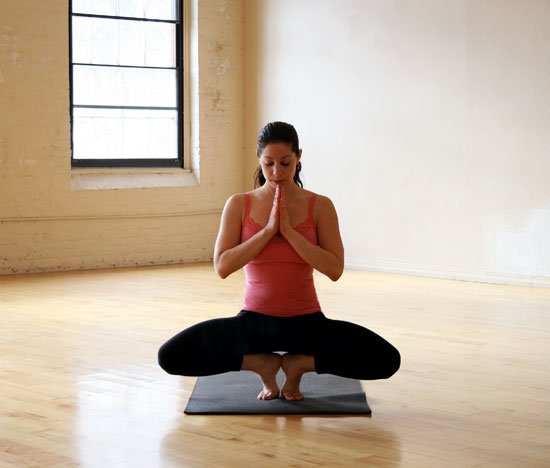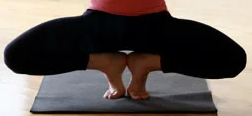Source
- Alexander Yanai V
olume 4
- Reel 12, Track 2, Lesson 2
Synopsis
- Lesson starts with a tumbleweed roll to the side, then continues as a lesson in tucking the feet so close under the body that one can come from sitting on the buttocks to standing on the feet.
Lesson Outline
- Sit, soles together, hold the foot arches. Place the elbow in front of the knee on the floor and lean to one side, or the other. Also roll onto the back. Also roll in a tumbleweed action right and left. Supine, hold feet with soles together, swing the legs to come to siting and back. Same position on back, touch toes to floor above head (soles togethert). Sit with soles together, lean the head forwards over the feet; also pull the feet close to the buttocks, also attempt to lift the bottom off the floor: use one or both arms behind to push on the floor to help. Or use one or both arms stretched forward to help. Sit on a low chair or object to gain the advantage of having the pelvis more elevated.
Focus of Moshe’s Teaching
- Indicate focus or key principles that are made explicit in the teaching
Related ATMs
- Tag Tumbleweeds
- Tag Next-to-chair
- See Also Theme Yoga
- Tag Balance
Baddha Konasana:
Resources
Share Your Insights (ideas, principles, strategies, experiences, …)
- This lesson affected my standing and walking, even though I could not approximate most of the steps. First my attention was drawn to the balls of my hip joints, which were pleasantly warm and solid. My heels felt so clearly and directly underneath them. Walking was easy and smooth. My head was effortlessly balanced on my spine and my neck free to move. Hopefully this unpacks what I meant when I said this lesson clarified the relationship between my pelvis and heels.
- It is not certain to this writer how Dr. Feldenkrais intended for the relationship of the feet to be. One Yoga pose (see image) seems to be similar to all aspects. It is sometimes called Toe Stand, Balancing Butterfly, or Padangustasana.
- The soles of the feet are to be together throughout the lesson. Which means that in the “standing” position, one is standing on the sides of the feet. Might one be “permitted” to come onto the toes as in the images here? (BenP)
Disclaimer: This site is for sharing information about Feldenkrais® Awareness Through Movement® lessons. The information included on this site is for educational purposes only. Nothing on Feldy Notebook should be construed as an attempt to offer medical advice or treatment.
All contributions to this website are licensed under the Creative Commons Attribution Share-Alike 3.0 License. Do not add any copyrighted information to this website. Feldy Notebook is sponsored by Kinetic Inquiry.
 olume 4
olume 4